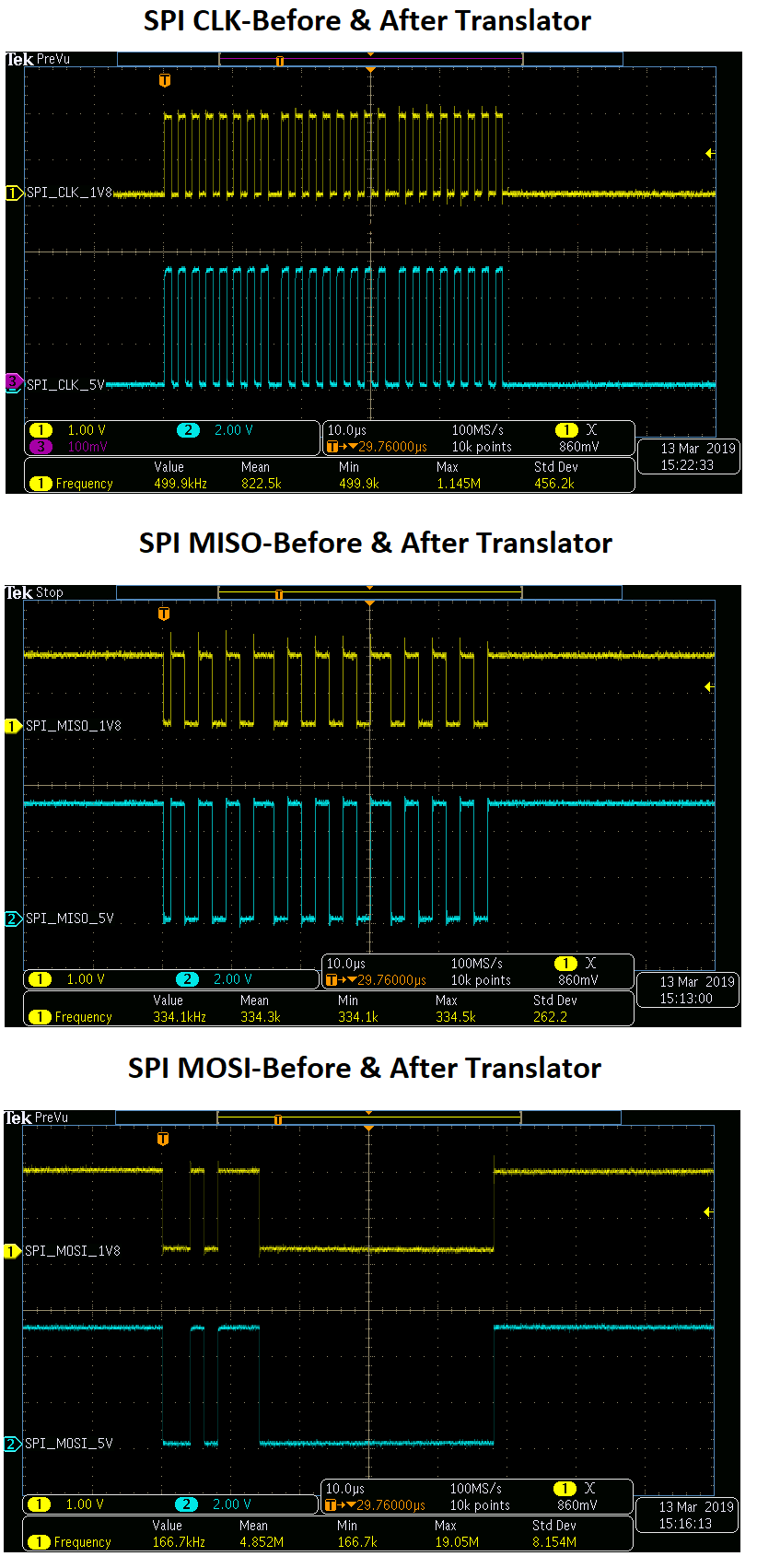Tool/software: Linux
Hello,
I am trying to measure the voltage at channel 0
CMD 0x97 represent below configuration.
7 Bit => Start Bit. Control byte starts with first HIGH bit - 1b
6-4 Bit => A2 - A0 Channel Select Bits - 001b (channel 0)
3 Bit => Mode - 0b (12Bit ADC)
2 Bit => Single-Ended Channel Selection - 1b
1-0Bit => Power-Down Mode No power down- 11b
I am observing random values at MISO line. Could you please review the command value. Is there any test mode/command available to check validate the ADC chip response.
From your previous comments,
>>how many clocks per conversion are you sending?
How can I check the configured clock per conversion?



